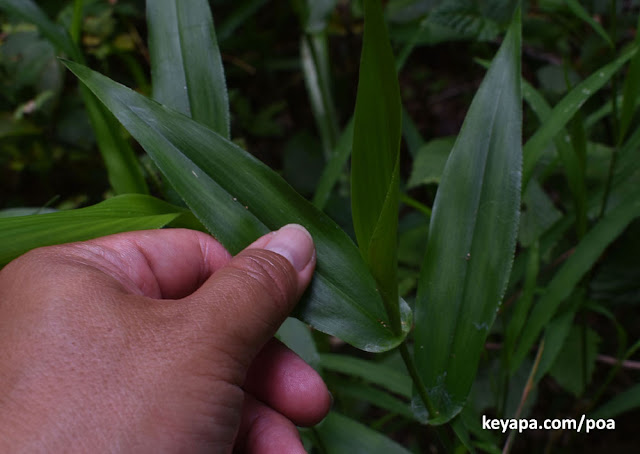 |
| Taeniatherum caput-medusae (Medusahead Grass) Inflorescence |
In previous posts, I touched upon some of the ways invasive grasses manage to overwhelm native populations.
Usually, this involves having some direct competitive advantage over their rivals. This may include pathogen release (they leave behind all the pathogens that afflict them back in their own native land), some intrinsic competitive abilities, or through some life cycle advantages (for example, as in the diagram below, the ability of Taeniatherum caput-medusae or Medusahead Grass to create flammable litter that prevents competitor germination and clears the rest via frequent wildfires).
 |
| How T. caput-medusae (Medusahead Grass) dominates its competitors |
Amazingly, however, a new way that invasive annual grasses manage to dominate their perennial native rivals has been discovered. In California, more than 9 million ha of land have been invaded by European winter annual grasses like Avena fatua (Wild Oats), which have usurped the native perennial bunchgrasses. Vast fields of these invasives have paradoxically enough, created the so-called "Golden Hills of California", which have become iconic to that region.
 |
| Golden Hills of California |
 |
| Avena fatua, an exotic and invasive annual grass in California |
One of these factors turned out to be a virus!
The barley and cereal yellow dwarf viruses (B/CYDVs) are a family of viruses that are generalized pathogens of grasses, and can cause stunting and slow growth. They travel from host to host via intermediate vectors, which are various species of aphids. The aphids take in the virus from an infected plant when they suck on the phloem, and then transfer it to another plant when they move to new pastures.
 |
| Aphids on spikelets of T. caput-medusae (Medusahead Grass) |
The invasive grasses compete against their perennial grass rivals by amplifying the population of the aphids, and this in turn significantly increases the pool of infectious viruses. Researchers found that aphids not only were much more attracted to the exotic annual grasses, but that their fecundity increased significantly in the presence of these species. Aphid densities were up to 800 times greater in areas with dense stands of the invasive annual A. fatua, and the infection rate of native grasses with B/CYDV more than doubled! The negative effect of this pathogen on perennial bunchgrasses is more severe than on the short-lived annuals, and this difference is enough to tip the scales of the competition.
 |
| Golden Medusahead Grass carpeting the ground in Oregon |




